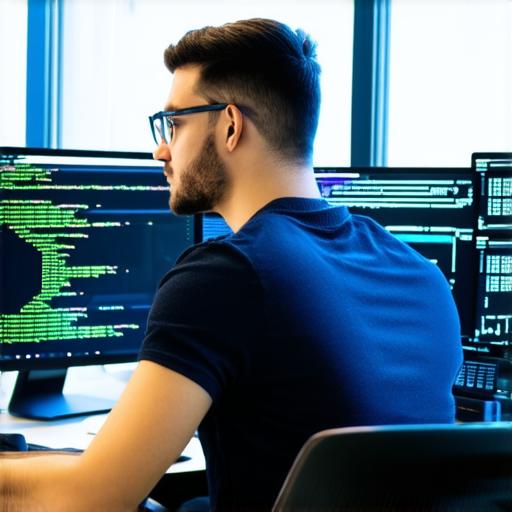Introduction:
The blockchain is a decentralized, distributed ledger that records transactions in a secure and transparent way. It’s an exciting technology that has the potential to revolutionize many industries, from finance and supply chain management to healthcare and voting systems. But getting started with blockchain can be overwhelming for beginners.
1. Understand the basics of blockchain
Before diving into the details of how to get started with blockchain, it’s important to have a basic understanding of what it is and how it works. Blockchain is essentially a digital ledger that records transactions in a secure and transparent way. It uses cryptography to ensure that the data on the ledger cannot be tampered with or altered, making it an ideal solution for industries where transparency and security are paramount.
One of the key features of blockchain is its decentralized nature. Instead of relying on a single central authority to manage the ledger, blockchain uses a network of computers to validate and verify transactions. This makes it much more resilient to attacks and censorship than traditional systems.
2. Choose your platform
There are many different platforms available for getting started with blockchain, each with its own strengths and weaknesses. Some popular options include Ethereum, Hyperledger Fabric, and Corda. Each of these platforms has its own set of tools and libraries that you can use to build decentralized applications (dApps) on top of the blockchain.
When choosing a platform, it’s important to consider your specific use case and requirements. Some platforms are better suited for certain types of applications than others, so it’s important to do your research and choose the one that best meets your needs.
3. Set up your development environment
Once you’ve chosen your platform, the next step is to set up your development environment. This will involve installing the necessary tools and libraries on your computer, as well as setting up a local blockchain network for testing and development.
For most platforms, you’ll need to install a programming language such as Solidity (for Ethereum) or Go (for Hyperledger Fabric). You’ll also need to set up a local blockchain node, which will allow you to test your dApps on a private network before deploying them to the main blockchain.
4. Build your dApp
Now that you have your development environment set up, it’s time to start building your dApp. A dApp is a decentralized application that runs on top of the blockchain and can be used by anyone with an internet connection.
When building a dApp, it’s important to consider the user experience and how people will interact with your application. You’ll need to design a user interface (UI) that makes it easy for people to use your dApp, as well as implement the necessary logic and functionality to make it work.

5. Deploy your dApp
Once you’ve built and tested your dApp, the next step is to deploy it to the main blockchain network. This will involve submitting your dApp to the platform’s governance process, which will review and approve or reject your application.
If your dApp is approved, it will be deployed to the main blockchain network, where it can be accessed by anyone with an internet connection. You’ll also need to set up a way for people to interact with your dApp, such as through a website or mobile app.
6. Promote your dApp
The final step is to promote your dApp and attract users.
